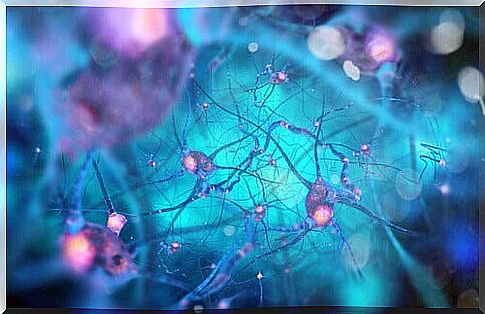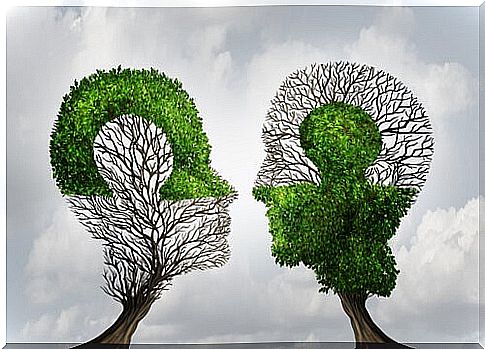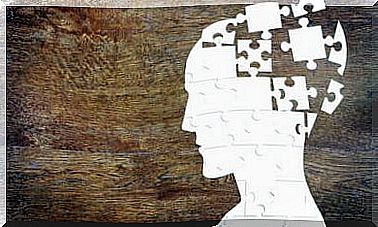Mirror Neurons And Empathy Are Wonderful Connecting Mechanisms

Mirror neurons and empathy are one of the most fascinating processes in neuroscience. This is where the actions and emotions of others are made visible to us, and thanks to them that we may be able to give an empathetic response. These are mechanisms that also have a social background, and their activation has a great influence on our daily relationships.
Imagine for a moment sitting in a theater. Now let’s visualize a set of excellent actors performing a piece, performing precise body movements and gestures, and singing each word to perfection, thus succeeding in communicating an infinity of emotions to us …
None of this would make sense if we did not have this biological basis capable of allowing us to activate a powerful array of sensations, feelings and emotions such as fear, compassion, joy, worry, repulsion, happiness… Without all this, the “theater” of life would be meaningless, we would be like empty entities, a hominid civilization that might not have been able to develop any type. of language.
Thus, we cannot be surprised by the fact that the interest in mirror neurons and empathy is not limited to the world of neuroscience or psychology; anthropology, pedagogy or art have also taken care over the last decades to know a little more about this interior architecture, these amazing mechanisms of which we do not yet know everything …

There is always a scientist or psychologist who can say with great confidence that mirror neurons will do for psychology the same thing the discovery of DNA did for biology in its day. Yes, of course, knowing a little more about mirror neurons and empathy every day probably helps us to know ourselves a little better, however, we must not make the mistake of believing that these are these processes and exclusively those processes that made us “human”.
What we are today is the result of an infinite number of processes. Empathy has facilitated our social and cultural evolution, but it was not the only determinant. With all of this, therefore, we want you to understand that when it comes to these dimensions of neuroscience, there are still those false myths that need to be highlighted. It is not certain, for example, that women have more mirror neurons than men: in fact, almost 20% of our neurons are of this type.
On the other hand, there are also no conclusive studies on the classic claim that people with autism spectrum disorder have a clear dysfunction in their mirror neurons, or that they are characterized by by their total and “absolute” lack of empathy. Nothing proves it. In reality, the real problem would reside rather in the cognitive aspect, in this “theory of mind” where the person is able to infer information, to make a symbolic analysis and to adopt in turn a behavior in turn. agreement with the observed stimulation.
To understand these processes a little better, let’s find out more about what science so far tells us about mirror neurons and empathy.

This information is very well known and it is important that we remember it. Empathy would not exist without movement, without our actions, our gestures, our postures… In fact, contrary to what one might think, mirror neurons are not a specific type of neuron. In reality, they are cells of the pyramid system related to movement. However, they have the particularity of activating not only with our movement, but also when we observe that of others.
This was discovered by Dr. Giacomo Rizzolatti, Italian neuro-physiologist and professor at the University of Parma who in the 1990s studied the motor movements of monkeys. It was fascinating to him that there was a series of neural structures that reacted to what another member of the same species or another was doing.
This network of pyramidal neurons or mirror neurons are found in the inferior frontal convolution and in the inferior parietal cortex. They are present in many species, not just in humans. Monkeys and our pets like dogs or cats can “empathize” with each other, but also with us.
We pointed out earlier in this article that mirror neurons and empathy are not that magic switch that at one point illuminated our consciousness to allow us to evolve as a species. In reality, it was a succession of infinite wonders, such as this coordination between the hand and the eye which developed our symbolic consciousness, or even this qualitative leap in the structures of our neck and our skull which made language possible. Speak clearly…
Among all these amazing processes are those that mirror neurons have carried out. They are the ones who measured our ability to understand and interpret certain gestures, to associate them with a set of meanings and words. Thus, they facilitated the social cohesion of the group.

Mirror neurons allow us to empathize with those around us. They are this bridge that connects us, that binds us together and which in turn allows us to be able to experience three very basic processes:
- To be able to identify and understand what the person in front of me feels or experiences (cognitive component)
- Being able to “feel” what this person is feeling (emotional component)
- Finally, and this type of response undoubtedly requires greater sophistication and greater delicacy, to be able to respond in a compassionate manner, giving rise to this social behavior that allows me to move forward in a group.
On the other hand, and at this point, it would be interesting to think about an interesting idea that offers us Yale University psychologist Paul Bloom. Most of his articles were quite controversial, because they defended the fact that empathy is no longer useful to us today ; behind this striking statement, in fact, lies an obvious reality.
We have normalized the suffering of the other, we are so immersed in our own micro-worlds that we are not able to go beyond our personal bubble… Therefore, Professor Singer urges us to be “ efficient and active altruistic people ”. Mirror neurons and empathy form that standard “package” in our brain programming that we all have. It’s like this version of Windows installed on the computer that we have just purchased, but that we must know how to use efficiently while taking advantage of its full potential.

We must therefore learn to look at others, leaving aside prejudices. There is also no point in limiting ourselves to “feeling everything that others feel”; what is needed is to capture their reality, but maintaining our own in order to be able to accompany them effectively in the process of help, support and altruism.
Because ultimately, a feeling that is not accompanied by any act is useless. So, if we got to the point where we are today, it is because we have been pro-active, because we have cared for each member of our social group. understanding that together, we move forward in better conditions than alone.
Therefore, let’s not forget what is the real purpose of our mirror neurons and empathy : to promote our sociability, our subsistence, our connection with those around us.










